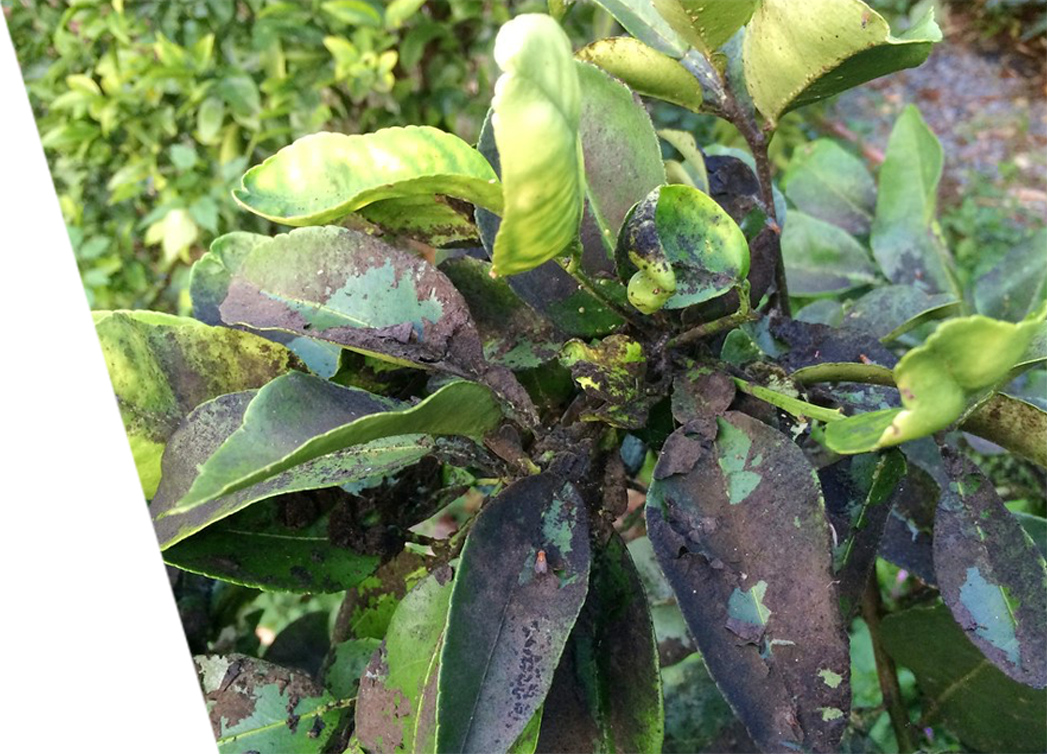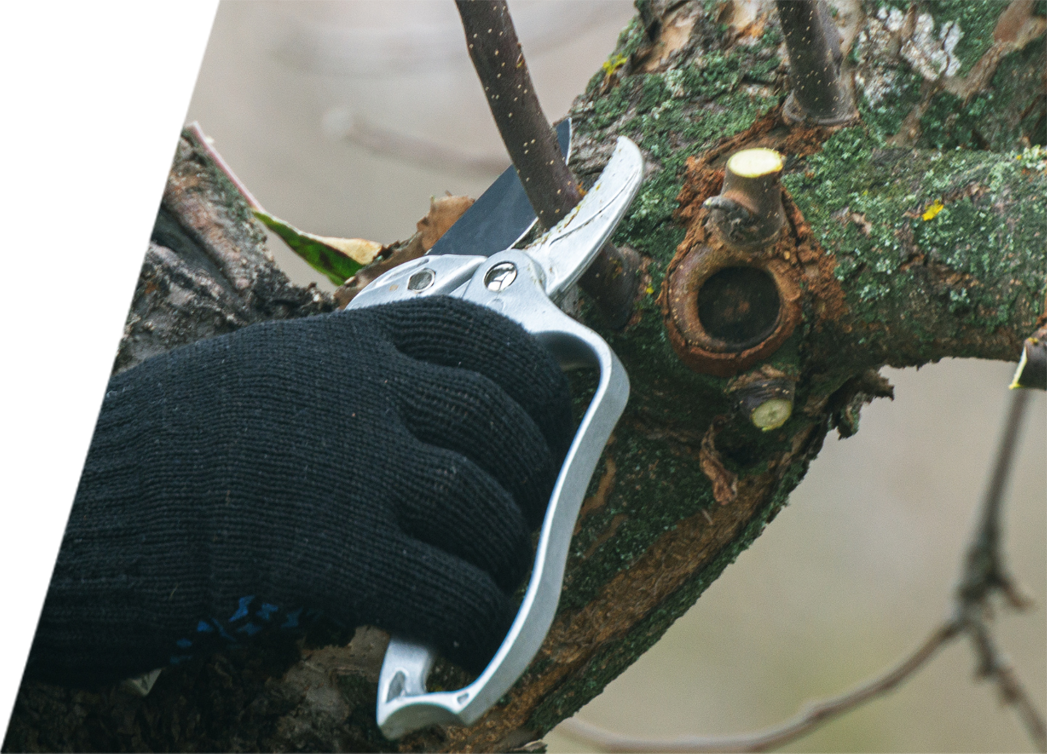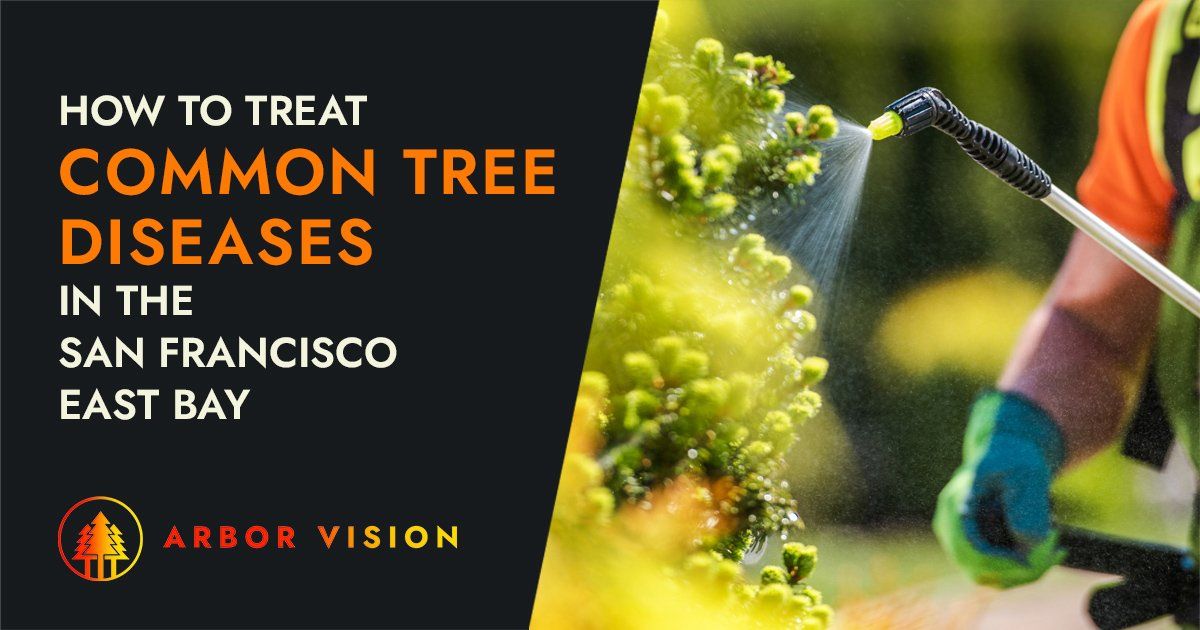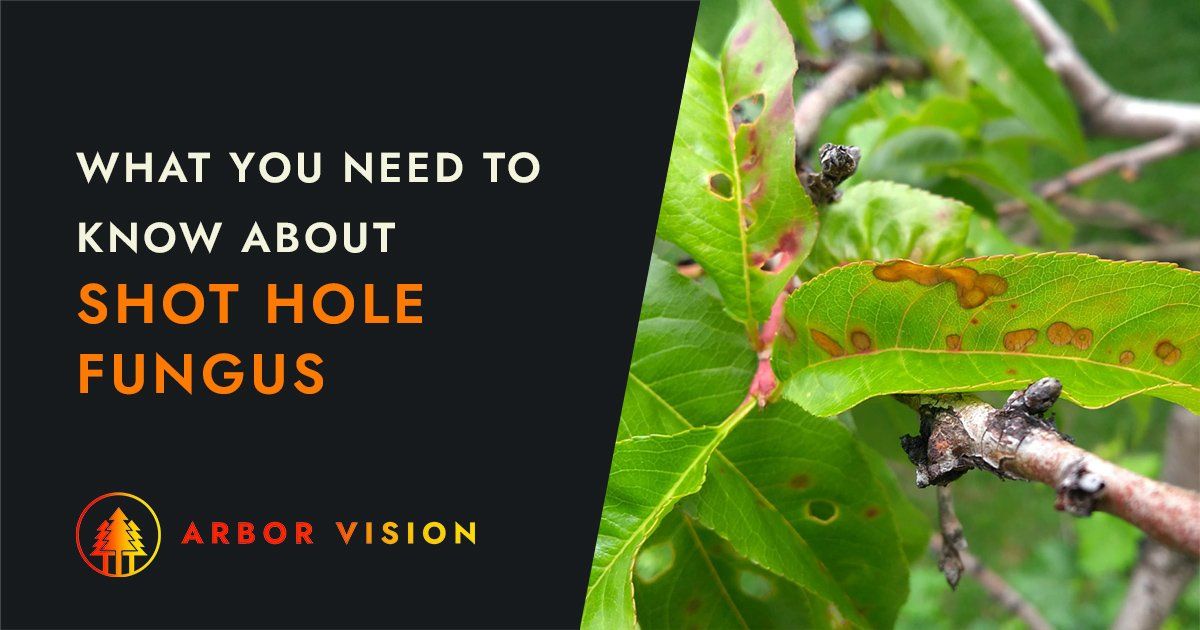How to Treat Black Sooty Mold Fungus on Trees
Share this page:

If you notice what appears to be black ash or a soot-like substance on your trees or shrubs, you may become alarmed. However, chances are, you are dealing with black sooty mold fungus, not actual ash.
Black sooty mold fungus is a common disease affecting trees and shrubs in the greater San Francisco East Bay Area. Sooty mold can be difficult to eradicate on your own, so that you may want help from a
tree disease specialist. Getting treatment helps to prevent the fungus from spreading to other trees while also ensuring the overall health of the affected tree or plant.
Read on to learn more about Sooty Mold Fungus.
The types of trees black sooty mold fungus affects
Stone fruit trees and almond trees are prone to shot hole disease. The fungal pathogen that causes shot hole disease, Wilsonomyces coprophilous, affects the Prunus genera family of plants. The most common stone fruit trees affected by this disease include apricot, peach, nectarine, plum, prune, and cherry trees. It is important to note that both these trees' ornamental and edible varieties are vulnerable to shot hole disease infection.
One of the first questions that you may have about sooty mold is what trees get sooty mold? Knowing what trees this fungus affects can help you determine if your trees may be susceptible to this fungus.
Sooty mold fungus can affect many trees, shrubs, and plants, including:
- Apple Trees
- Azaleas
- Banana Trees
- Camellia
- Citrus Trees
- Crape Myrtle
- Elm
- Fig
- Gardenia
- Guava Trees
- Holly
- Laurel
- Lemon Trees
- Linden
- Maple
- Northern Catalpa
- Oleander
- Orange Trees
- Pecan
- Pine
- Rose Bushes
- Sugarberries
In addition to targeting these plants, the fungus can grow on most plants underneath or touching plants with black sooty mold.
The signs of black sooty mold fungus
The tell-tale sign that your tree or plant has been affected by black sooty mold fungus is leaves, twigs, branches, and fruits that are covered in black or dark gray mold. Many people who have this fungus on their shrub or tree often mistake the mold for ash or residuals from a fire at first. They think their tree may have caught on fire or that someone threw ash on their tree. This is precisely how black sooty mold got its name; it resembles fire soot. If you touch the fungus, you will notice a sticky feel. This stickiness helps it stick to plants and makes it hard to remove. If you wipe away the fungus, you may notice the leaves are yellow.
How black sooty mold fungus is spread
Now that you know more about black sooty mold, you may wonder what causes black sooty mold. You may also ask how does sooty mold spread? Black sooty mold fungus is a fungus that grows on the honeydew excrement from insects. When insects, such as aphids, mealybugs, whiteflies, leafhoppers, and soft scales, are present on plants, they suck the sweet plant sap out of leaves and branches. They then excrete what is known as honeydew, precisely what the black sooty mold fungus thrives on and needs to survive. When windy outside, spores from nearby black sooty mold can be blown onto the honeydew excrement, where the fungi sticks, causing it to grow and thrive. Spores can also be washed off of plants, and those spores can stick to honeydew excrement on other plants.
How to treat black sooty mold fungus
Black sooty mold fungus needs two things to grow. First, it needs spores to grow. Unfortunately, you cannot control what spores are flying through the air. Secondly, the fungus needs honeydew to be present on a plant to grow and thrive. This is something that you can control. Honeydew is left behind by insects feasting on your plants and trees. To treat the black sooty mold fungus, you need to kill the insects leaving behind honeydew, thus allowing the fungus to grow and thrive.
There are different ways you can kill insects on your trees and plants, though treatment may vary based on the type of tree or plants covered in the mold and the types of insects infesting your trees. The most common ways to treat plants and trees include horticultural oil, neem oil, or insecticidal soap. The soap or oil should be applied to the tree foliage, including the top and undersides of the leaves. The oil or soap can also be applied to branches or limbs after they have been rinsed clean. A
tree service can help you determine the best treatment methods based on the tree type and insects present.
The outcomes of treating black sooty mold fungus
Anytime that black sooty mold fungus is treated, you must be patient. It can take quite some time to completely rid your plant of black sooty mold fungus and start seeing new growth on plants that are not affected by sooty mold. When the insects that infest your plant are appropriately treated and removed, you can successfully remove black sooty mold fungus. However, one of the most common mistakes people make is removing the insects but not following through with preventative treatments. If you fail to utilize preventative insect treatments, there is a good chance that the pests will be back on your plant, and black sooty mold fungus can begin to grow again.
The outcomes without black sooty mold fungus treatment
Black sooty mold fungus itself will not kill your tree. However, black sooty mold fungus can weaken your tree or shrub, leaving it more vulnerable to other diseases that may be more harmful to your trees. Additionally, the insects that cause black sooty mold fungus can harm your plants, so removing these pests is essential not only to prevent black sooty mold fungus but also for the overall health of your trees and shrubs.
How to stop the spread of black sooty mold fungus
It can be challenging to minimize the spread of black sooty mold fungus.
Minimizing or preventing insects from infesting your plants or trees is one of the best ways to reduce the chances of black sooty mold fungus affecting your trees or shrubs. Black sooty mold fungus cannot grow and spread without insects creating honeydew on trees or shrubs.
Do Your Trees Show
Signs of Black Sooty Mold Fungus?
If you suspect your tree has sooty mold, we invite you to
learn more about our tree treatment services for this fungus and other diseases common to the San Francisco East Bay area.
Share this page:

Related Topics:
Site Map
Arbor Vision, Incorporated
CA Licensed Contractor #1045914
Mon - Sat
8:00 AM - 5:00 PM
Sun
Closed


Copyright © 2023 Arbor Vision, Incorporated. All rights reserved.





